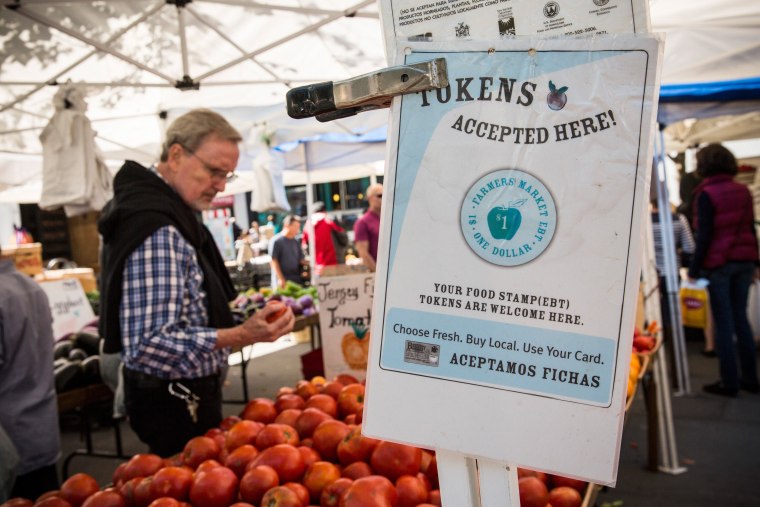WASHINGTON — The nutrition assistance program formerly known as food stamps will provide the largest increase in benefits in its history at a time when low-income families are still struggling financially because of the Covid-19 pandemic.
The revisions announced Monday will raise the average benefits for recipients of the Supplemental Nutrition Assistance Program, or SNAP, by more than 25 percent from pre-pandemic levels, and all 42 million people enrolled in SNAP will receive additional aid when the changes go into effect in October.
"It's in our collective best interest to make sure that we're helping folks through difficult times," said Agriculture Department Secretary Tom Vilsack on Monday.
Many food assistance provisions in President Joe Biden's Covid relief bills are expiring, including one that boosted benefits by 15 percent. Many people relied on government assistance to feed their families throughout the pandemic.
Under the new rules, the average monthly benefit of $121 a person before the pandemic will rise by $36. The Agriculture Department is making the changes through revisions to the Thrifty Food Plan, a list of food groups the government uses to estimate the cost of an economical and nutritious diet.
Families have different consumption patterns than when the program was last updated, Vilsack said, necessitating the changes.
"We know this is a program that reduces poverty, we know this is a program that improves health outcomes for kids, we know based on the data that it also results in better educational achievement because kids are fed," said Vilsack.
The 2018 farm law, which sets federal agricultural and food policy for five years, ordered the Agriculture Department to review the program within four years. The farm bill almost failed because of partisan disagreements over work requirements, a provision of the House bill that was celebrated by former President Donald Trump but became a major sticking point during negotiations.
The benefits are awarded on a sliding scale, and the new maximum will rise to $835 a month for a family of four, an increase of 21 percent. (The average benefit will increase by 27 percent from pre pandemic levels, adjusted for inflation.)
The program was last revised in 2006; before that, it was based on 1999 data.

